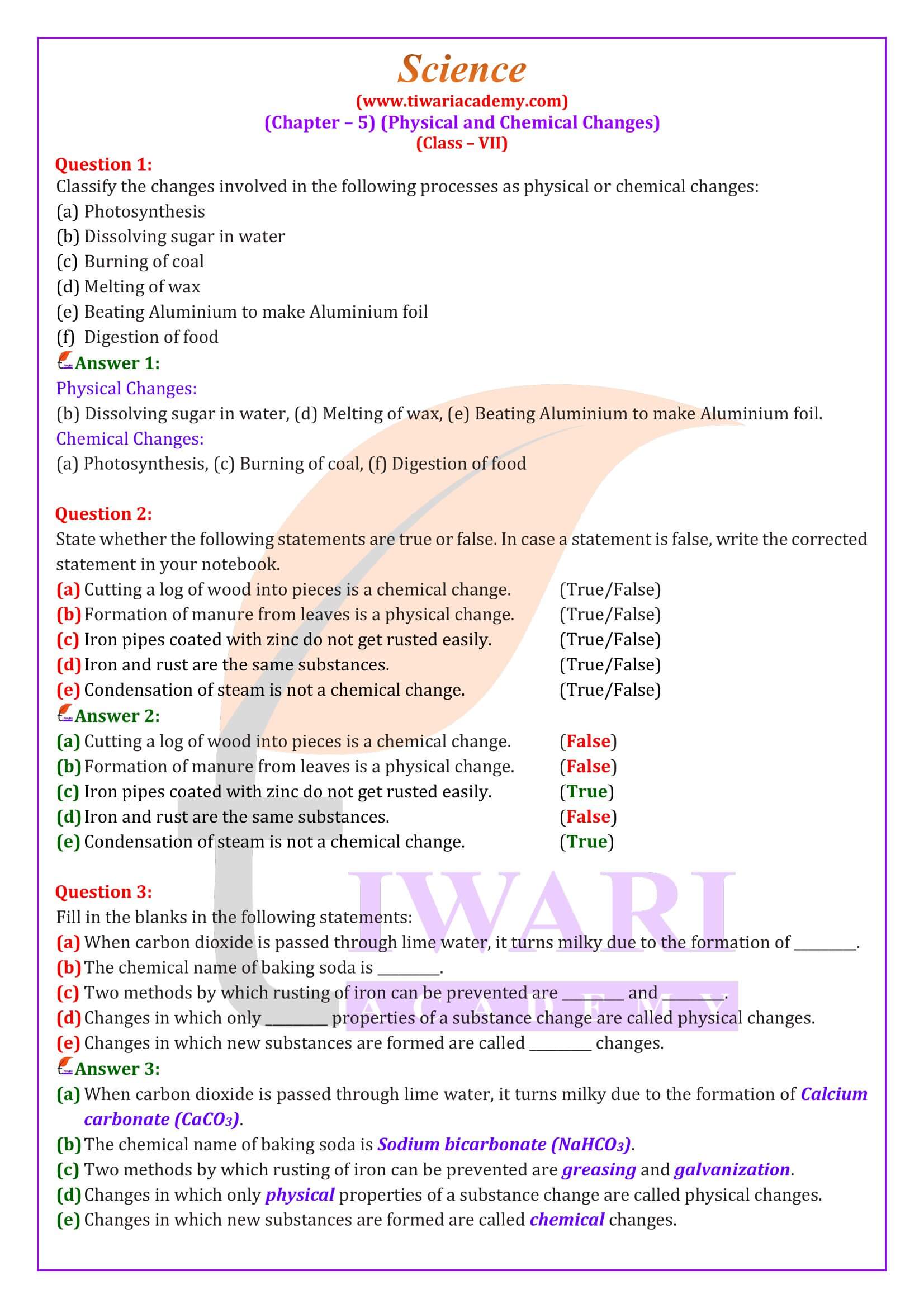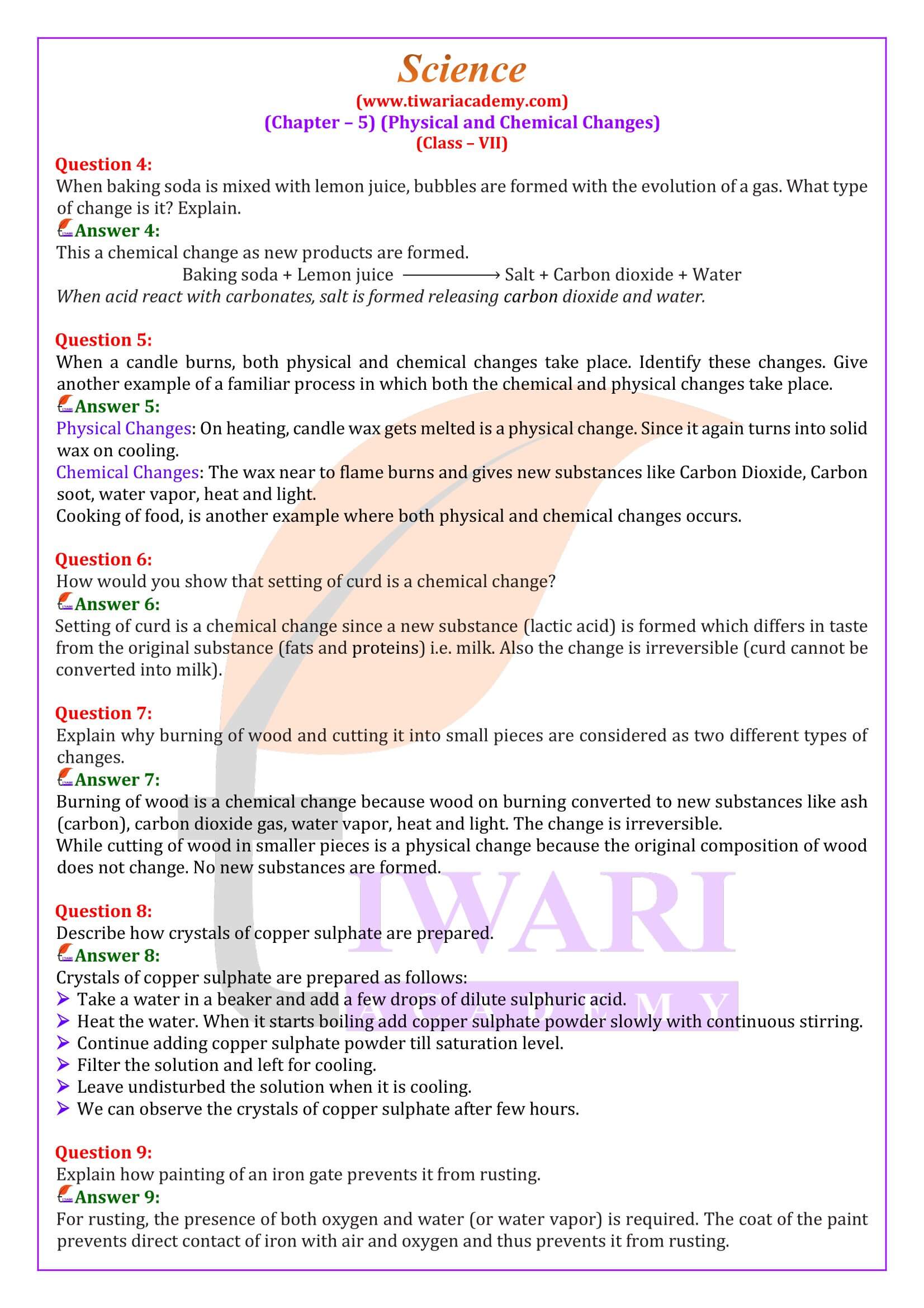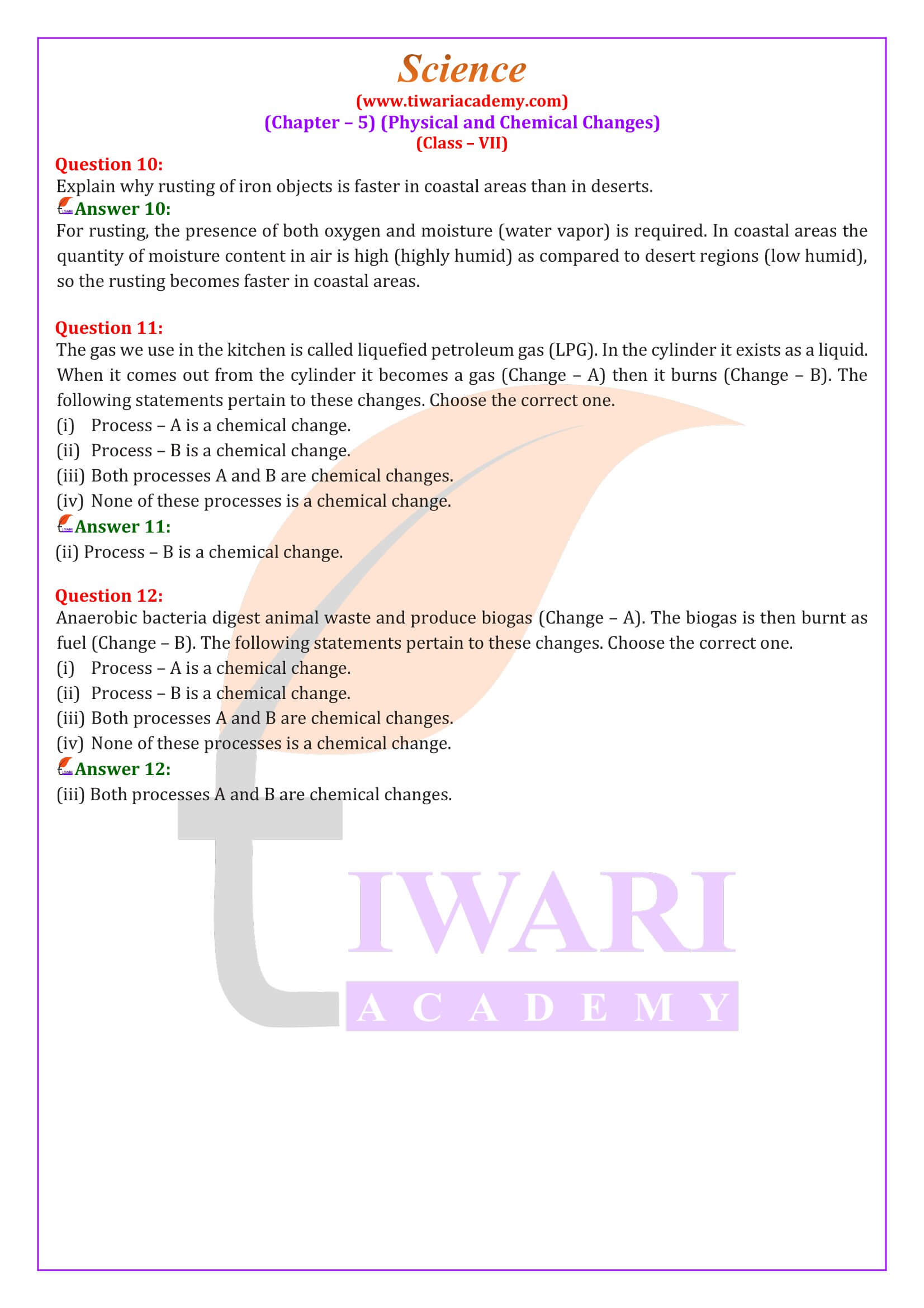Question Wise Class 7 Science Chapter 5 Solutions
Class 7 Science Chapter 5 NCERT Answers
Class 7 Science Chapter 5 in Hindi Medium
Class 7 Science Chapter 5 Extra Questions
Class 7 Science Chapter 5 MCQ
Class 7 Science NCERT Book Download
NCERT Solutions for Class 7 Science
NCERT Solutions for Class 7 all Subjects
NCERT Solutions for Class 7 Science Chapter 5 Physical and Chemical Changes in English and Hindi Medium free to download in PDF file or View online without downloading. 7th Science Chapter 5 Explanation in Hindi and English Medium videos format is based on new NCERT books published for academic year 2025-26.
| Class: 7 | Science |
| Chapter 5: | Physical and Chemical Changes |
| Content: | Exercises, MCQ and Extra Quesitons |
| Content Type: | Image, PDF and Videos |
| Academic Session: | 2025-26 |
| Medium: | English and Hindi Medium |
Class 7 Science Chapter 5 NCERT Solutions
Video solutions and pdf solutions of Class 7 Science Chapter 5 are explain well in easy to understand language and based on latest NCERT Text Books for the academic session 2023–24. All the contents are free to use. No login or password is required to access PDF files or Videos contents on Tiwari Academy website or apps. Share Your View with your friends in Discussion Forum. Download Class 7 Offline and Online Apps for academic session 2025-26. For any educational help, please contact us without any hesitation.
Class 7 Science Chapter 5 Answers
CBSE NCERT Solutions for Class 7 Science Chapter 5 Physical and Chemical Changes is given below to use online or download in PDF format. Visit to Discussion Forum to ask your doubts. Download Class 7 Science App 2025-26 in Hindi and English Medium for offline use.
Important Questions on 7th Science Chapter 5 for Practice
- Which of the following is a physical change?
(a) Rusting of iron
(b) Combustion of magnesium ribbon
(c) Burning of candle
(d) Melting of wax - Two drops of dilute sulphuric acid were added to 1 g of copper sulphate powder and then small amount of hot water was added to dissolve it (step I). On cooling, beautiful blue coloured crystals got separated (step II). Step I and step II are:
(a) physical and chemical changes respectively.
(b) chemical and physical changes respectively.
(c) both physical change.
(d) both chemical change. - Which of the following is a chemical change?
(a) Twinkling of stars
(b) Cooking of vegetables
(c) Cutting of fruits
(d) Boiling of water - Iron pillar near the Qutub Minar in Delhi is famous for the following facts. Which of these facts is responsible for its long stability?
(a) It is more than 7 metres high.
(b) It weighs about 6000 kg.
(c) It was built more than 1600 years ago.
(d) It has not rusted after such a long period. - A chemical change may involve –
(a) change in colour only
(b) change in temperature only
(c) evolution of gas only
(d) any or all of the above - Galvanisation is a process used to prevent the rusting of which of the following?
(a) Iron
(b) Zinc
(c) Aluminium
(d) Copper - Which of the following is/are true when milk changes into curd?
(i) Its state is changed from liquid to semi solid.
(ii) It changes colour.
(iii) It changes taste.
(iv) The change cannot be reversed.
Choose the correct option from below:
(a) (i) and (ii) are correct
(b) (ii) and (iii) are correct
(c) (i), (iii) and (iv) are correct
(d) (i) to (iv) are correct - Paheli’s mother made a concentrated sugar syrup by dissolving sugar in hot water. On cooling, crystals of sugar got separated. This indicates a –
(a) physical change that can be reversed.
(b) chemical change that can be reversed.
(c) physical change that cannot be reversed.
(d) chemical change that cannot be reversed. - A man painted his main gate made up of iron, to
(i) prevent it from rusting. (ii) protect it from sun. (iii) make it look beautiful. (iv) make it dust free.
Which of the above statement(s) is/are correct?
(a) (i) and (ii)
(b) (ii) and (iii)
(c) only (ii)
(d) (i) and (iii) - Which of the following statement is incorrect for a chemical reaction?
(a) Heat may be given out but never absorbed.
(b) Sound may be produced.
(c) A colour change may take place.
(d) A gas may be evolved.
Answers of Important Questions (MCQ)
- 1 (d)
- 2 (c)
- 3 (b)
- 4 (d)
- 5 (d)
- 6 (a)
- 7 (c)
- 8 (a)
- 9 (d)
- 10 (a)
Important NCERT Questions Class 7 Science Chapter 5
Fill in the blanks: When carbon dioxide is passed through lime water, it turns milky due to the formation of _________.
When carbon dioxide is passed through lime water, it turns milky due to the formation of Calcium carbonate (CaCO3).
When a candle burns, both physical and chemical changes take place. Identify these changes. Give another example of a familiar process in which both the chemical and physical changes take place.
Physical Changes: On heating, candle wax gets melted is a physical change. Since it again turns into solid wax on cooling. Chemical Changes: The wax near to flame burns and gives new substances like Carbon Dioxide, Carbon soot, water vapour, heat and light. Cooking of food, is another example where both physical and chemical changes occurs.
Explain how painting of an iron gate prevents it from rusting.
For rusting, the presence of both oxygen and water (or water vapour) is required. The coat of the paint prevents direct contact of iron with air and oxygen and thus prevents it from rusting.
Explain why rusting of iron objects is faster in coastal areas than in deserts.
For rusting, the presence of both oxygen and moisture (water vapour) is required. In coastal areas the quantity of moisture content in air is high (highly humid) as compared to desert regions (low humid), so the rusting becomes faster in coastal areas.




